Pt 3 - David Tennant's Obscure Performances: The Amazing Story of 'Only Human' (2002)
...take an exclusive peek behind the scenes of the unknown second almost-pilot!
Welcome to the third part of a five-part series about Only Human, an unaired BBC pilot made in 2002 and starring David Tennant as Tyler, a private detective who works with a virtual digital assistant called Ada. In this series of posts, we’ll be exploring the origins of the pilot and unveiling its hidden history. Stay tuned for the rest of the series!
Before you continue reading, make sure you’ve read Part 1 and Part 2 of The Incredible Story of Only Human…
…and so you know what in the world we’re talking about before reading further, be sure to watch the (first) pilot!
CLICK HERE TO WATCH ONLY HUMAN ON DAILYMOTION

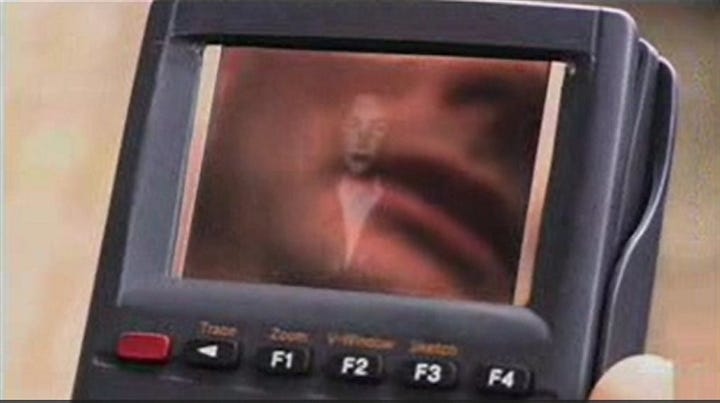
When we last left our story, we were at the end of February 2002. The first pilot of Only Human (and its Making Of… documentary) had been completed and distributed to the powers that were at the BBC. For a while, things went quiet. Both Goldman and McClellan say the project floated about for a bit, and in the meantime, David finished his run as Robert in Push Up at the Royal Court, and segued straight into rehearsals for his next production, Lobby Hero.
With the completed pilot in hand, Goldman wanted to sell the idea of the show to as wide an audience as possible. She knew getting people in the BBC interested in the concept meant she needed more story line ideas, so in Imagineering review meetings during March of 2002, McClellan was asked to develop some.
On 24 April 2002, McClellan and Smith were invited to an initial meeting with Nadine Marsh-Edwards and Regina Dunphy from BBC Scotland. “They wanted to know more about the idea,” McClellan said. They were only too happy to oblige. A series of meetings about the show and its possibilities followed; while he and Smith made one trip to Edinburgh, most meetings happened in London.
The meetings paid dividends when BBC Scotland announced they were interested in striking a development deal, with the possible intent to take Only Human to series. They were willing to put up the initial funding but in return, they wanted the team to develop a script for an hour-long pilot episode, come up with some more general ideas for future episodes and series, and test out a more complex motion capture set up.
Both McClellan and Smith had come from comic backgrounds and were comfortable approaching Only Human with an eye towards humor. Smith had experience with the sitcom dynamic, and most of what McClellan had written previously for television had also been very comedy and gag-focused. But BBC Scotland was interested in taking it more in a drama direction - a shift which made total sense to McClellan. He was on board with the idea and set about doing some story and script development over the summer while the team made plans to re-shoot the pilot they’d completed in January 2002.
And Only Human began again.
Meanwhile, interest in the power of interactive media was rising all over the world, and the Banff New Media Institute (BNMI) at the Banff Centre in Banff, Alberta, Canada, was at the forefront of this digital revolution. In her role as BBC Imagineering’s Development Executive, Goldman attended two of the BNMI’s media conferences: Interactive Screen 0.1 in July 2001, and Artificial Stupidity/Artificial Intelligence in August 2002. She was one of three presenters on “Learning through Machines, Machines that Learn,” which was held on 2 August 2002 from 9:30-11:00a in the JPL Building’s Rice Studio and asked the question, “Are there parallels in the way that we teach machines and the ways we teach humans?” Part of Goldman’s contribution to this presentation was a screening of the recently-completed first pilot of Only Human. (Audio recordings of both conferences are archived at the Paul D. Fleck Library and Archives At the Banff Centre, and the Artificial Stupidity/Artificial Intelligence recordings are stored here.)


By the end of the summer, progress on the second shoot of Only Human was moving ahead swiftly. The team were ready to begin casting by September for a projected October shoot. However, due to the influx of capital and a new more tech-focused perspective from BBC Scotland, the second shoot was shaping up to be significantly different from its first.
This difference was also why McClellan often referred to the second shoot as an “almost-pilot” - its focus had shifted from a fully fleshed-out story-centered pilot episode. “It was mainly done to test a more robust tech setup for doing motion capture and create the character live at different locations,” McClellan explained. “The key thing was not to tell a story, but to try out a better tech setup and more complex scenes with Ada.”
It also seemed to McClellan and Smith to be a good opportunity to test different actresses in the role of Ada. “I thought Ruth [Millar] did a fantastic job in difficult circumstances in the initial pilot, but I know she found the tech hard work,” McClellan said. “So, we thought we’d try three different actresses to see how they coped.” The actresses they eventually chose were Sarah Ozeke (White Teeth and Trial & Retribution), Ivana Horvat (The Bill, Casualty and Keen Eddie), and Clare Buckfield (who was already well-known for her role as Jenny Porter on the BBC1 sitcom 2point4 Children).
David, however, was always going to be Tyler - and where he was concerned, the shooting schedule for the second pilot was perfectly timed. Among other projects, he’d wrapped up his role in Lobby Hero to rave reviews, done a staged reading of What You Will for the Globe’s Read Not Dead initiative, filmed an episode of Foyle’s War, and played Charlie in Josh Appignanesi’s short film, Nine 1/2 Minutes. By October, he was free to resume the role of Tyler.
With the October shoot approaching, the pilot began to take shape. The team chose not to go back to Vicon and instead formed a second collaboration with Dutch motion capture specialists Motek Entertainment to develop a more reliable motion capture system. The standard Ada model Kaydara had created remained essentially the same, albeit a little slicker and with better resolution. They also secured a more stable location for their exterior shots (unlike the first pilot, where scenes had been shot on the fly around Docklands Light Railway). Decisions were also made on which scenes would be added, shortened or cut completely.
This time around, McClellan said, they were less ambitious. “Because the tech set up was more substantial, we weren’t as mobile as before, when we were just hopping on tube trains and running round stations. We had a more limited but controllable set of locations - the car park, the club, Tyler’s flat.”
The shoot began on 7 October 2002 with a full two-day sequence of tech rehearsals and stage set ups required for their upgraded tech (which David didn’t attend). Their central location for the shoot was a car park near the BBC’s main Television Centre in White City (which was sold in 2012 and is now a hotel and apartment complex.)
“For the second shoot, we set up this mobile stage to put the motion capture set up on,” McClellan told me. “It was kind of like what rock bands use when they're doing outside gigs. We were then able to shoot sequences with David and Ada in the car park.”
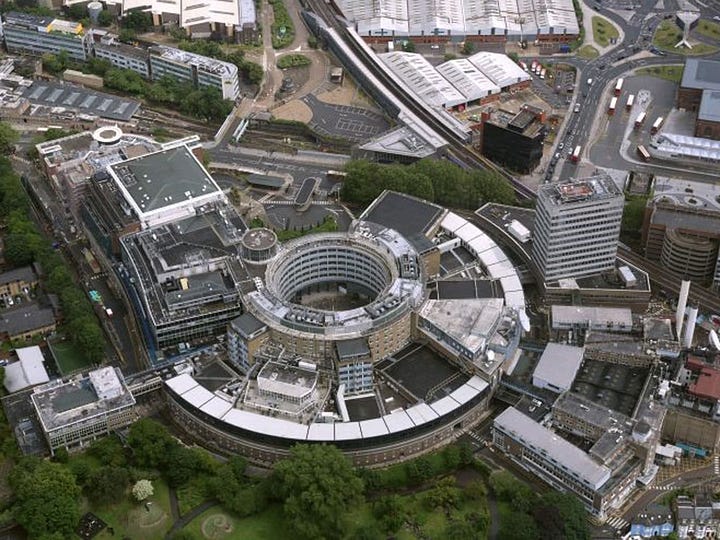
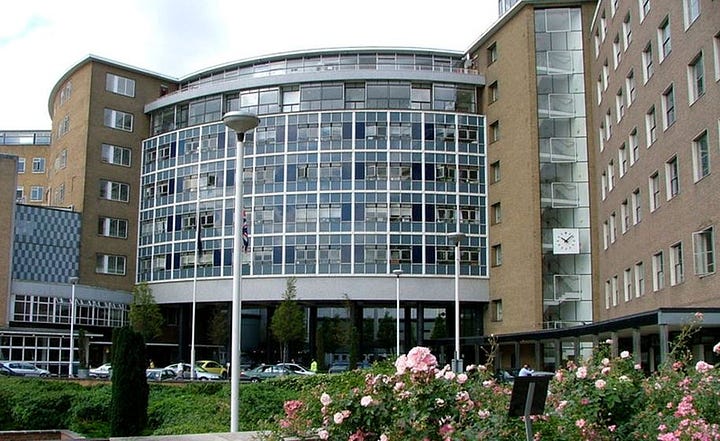
The tech rehearsal set-ups were also important for another reason: the three actresses chosen for the Ada role had never worked with the motion capture technology. “We tried it out with them,” McClellan said, “and they had to learn how to act in the suit and ventriloquize this virtual puppet. It was a lot easier for them [than it had been for Ruth Millar] because the tech setup was a lot more robust at that point.”
After the set ups were complete, David appeared on set as Tyler for the three-day shooting window (October 9-11) to revise and re-shoot portions of longer sequences from the scenes from the first pilot with the new line-up of Ada(s). Because the shoot was mostly re-shooting old scenes, rehearsals and read-throughs were handled on an as-needed basis on set instead of scheduled ahead of time. A brand-new scene had also been planned.
“What we did was shoot one scene from the initial pilot on one day with one actress, then another scene on another day with a different actress,” McClellan said. “These were all scenes from the original script for the first pilot. [On the last day] we shot a new scene with Tyler, his girlfriend Sally, and Ada to see if we could do a sort of three-way interaction.”
Sarah Ozeke played Ada on the first day of shooting, which largely consisted of an updated re-shoot of the street scene from the first pilot, where Tyler is walking outside and talking to Ada on his mobile phone and she stops him from walking out in front of a car. “We also re-shot the scene where Ada intervenes to stop Tyler being run over,” McClellan said.
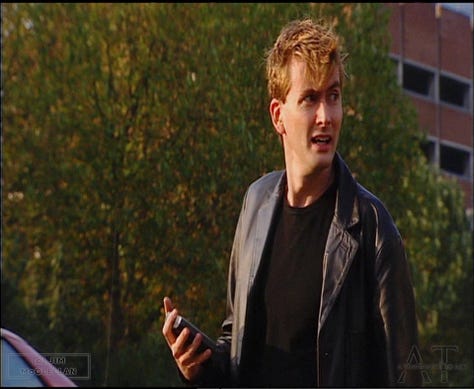
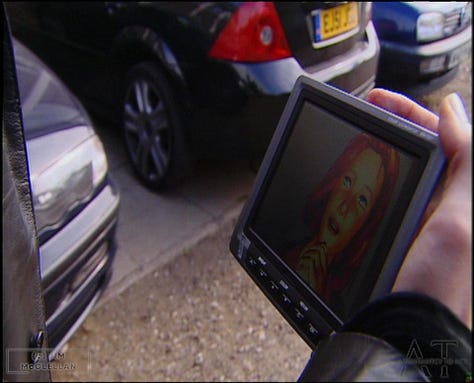
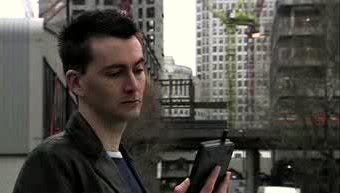
The stills from the second pilot reveal another interesting detail: David has a vary different hairstyle! Gone is the short dark hairstyle he sported in the first pilot, which was all he had managed to grow out from shaving his head for his role as Gethin Price in Comedians; between February and October 2002, he had been able to grow his hair out fully again.
On the second day of the shoot, Ivana Horvat stepped into the role of Ada. Most of the day was scheduled for filming a re-tailored version of the nightclub scene in the first pilot where Tyler catches up with Hannah, the woman he is tailing.
Technical Director Quentin Plant and Andy Smith spent some time before this shoot working out how to make Ada appear on the different screens and move from one to the other. Ivana had to step carefully to the right mark to make sure she appeared in the right place as she moved across the different screens.
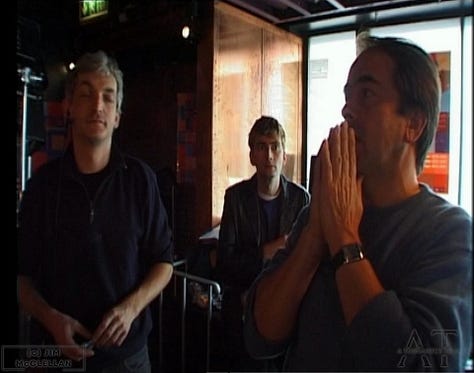
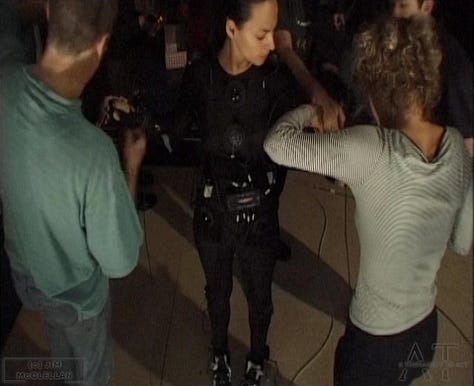
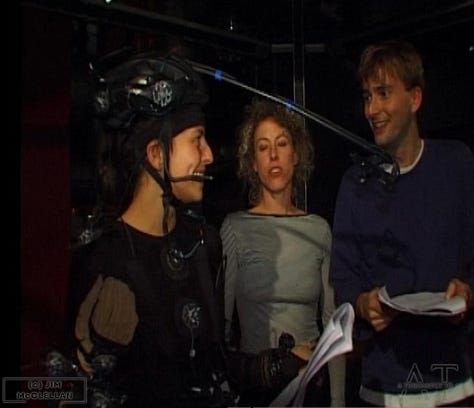
She and David both worked with virtual performance coach Ruth Gibson to get the timing right. Gibson, who was brought in by the motion capture company, was there to help all the actresses during the shoot get used to moving in the suit and learn what they could and couldn’t do with the Ada model.
In the new version of the scene, McClellan said, the only part they re-shot was Tyler’s arrival at the club where Hannah ended up.
They did, however, make one other decision - McClellan’s fifteen seconds of fame as the original club bartender was left on the cutting room floor!

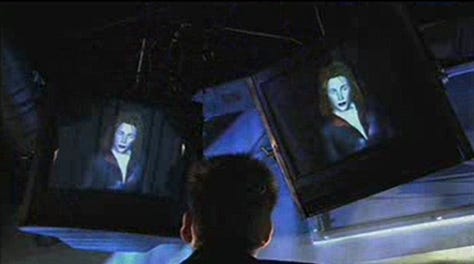
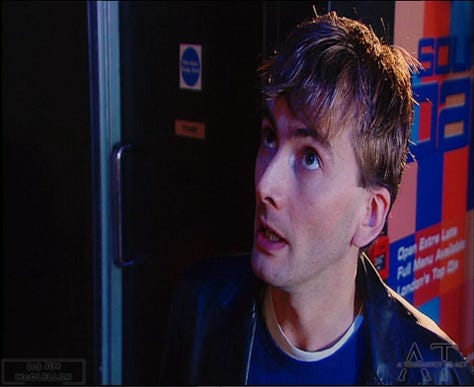
On the last day of the shoot, cast and crew prepared to shoot the planned new scene, set in a disused office space in Tyler’s flat. Clare Buckfield - who was Ada for this last day - joined Anna Wilson-Jones in her first appearance as Sally Smith, Tyler’s girlfriend (voiced in the first shoot by crew member Sophie Cash).
In the scene, Tyler is having a drink in his flat and chatting with his girlfriend, Sally, when Ada interrupts from a computer on a desk at the side of the room. She tells him she’s received a call from a new character named Mars, who Tyler had worked for in the past. Ada tells Tyler that Mars had been demanding repayment for an unpaid debt, and she thought it best to screen and summarize the call for him rather than have him take the call himself.



“The aim with the new scene was to see how we could use the Ada character in more complex scenes - not just one-on-ones with Tyler,” McClellan explained. “The scene kind of makes sense within the Only Human world and adds a bit more detail about [Tyler’s landlord] Cam, but it doesn’t directly relate to the vague plot that holds the first pilot together. So, although Ada interrupts his drink with Sally, she also helps him out.”
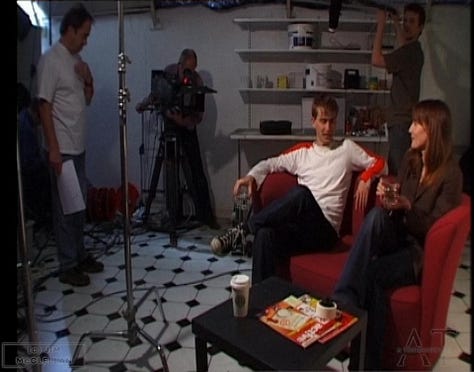


Later in this series we’ll get into quite a bit more detail on this scene (and there may even be a few more new stills, too)! For now, though, we’ll move on to events after the shoot’s wrap on 11 October 2002.
After its conclusion, the team fulfilled a second request from Imagineering/Creative R&D and BBC Scotland by filming a second documentary, The Making Of…Only Human 2, directed by Esteban Manzanares. McClellan said that unlike the first The Making Of… documentary, the second placed more focus on technology than on the characters and story.
David was again interviewed on set about how he felt about his interactions as an actor with a motion-captured virtual character.



Also interviewed were all three of the actresses who played Ada during the second shoot - Sarah Ozeke, Ivana Horvat, and Clare Buckfield - as well as various technical crew members, McClellan, Smith, and Plant, and Ali Hope, Regina Dunphy and Rowena Goodman for the BBC.
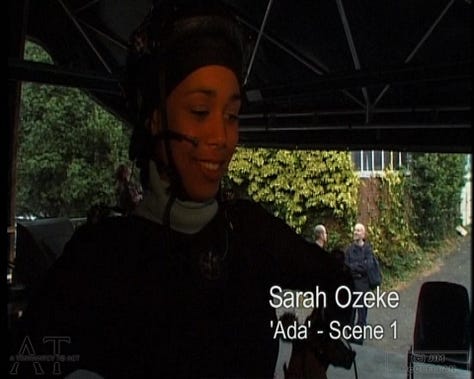


Editing and post-production began for McClellan and Smith the week after the shoot was completed. The process was considerably smoother given the pair didn’t have to stitch together an entirely new pilot. Instead, they created a DVD package of all the content they’d generated to date: the entirety of the first pilot and its subsequent The Making Of…Only Human documentary, the second tech-focused The Making Of…Only Human 2 documentary, and the three scenes (two re-shoots and one new) they’d shot with each new “Ada”. To this package, they also added snippets of information (such as biographies of cast and crew) they thought the Imagineering development team and BBC Scotland could use to entice further interest in the project.
After the editing process was complete in early November 2002, McClellan and Smith held more meetings with Nadine Marsh-Edwards and Regina Dunphy from BBC Scotland to discuss the second shoot and what they felt they had learned from the process. In early 2003, the finished DVDs of the second shoot were circulated to the cast and crew - including David - as well as the people involved in the project via BBC Scotland.
And then?
All they could do was wait.
Next time…the second almost-pilot of Only Human is done. But what does BBC Scotland finally decide? Be sure you’re subscribed to follow along as the whole story is revealed. Stay tuned!
—
ONLY HUMAN 2ND SHOOT (Oct 2002)
&
THE MAKING OF…ONLY HUMAN 2

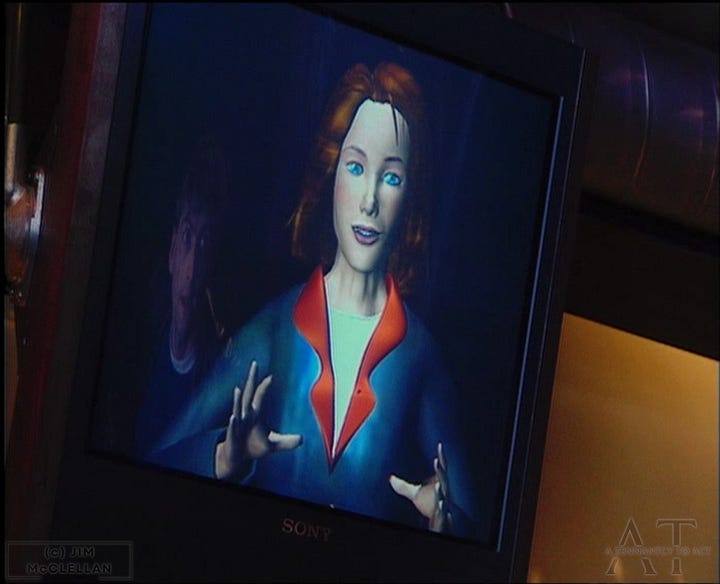
SHOOTING SCHEDULE - 2nd SHOOT
Mon, Oct 7 - set up / tech rehearsals
Tues, Oct 8 - set up/ tech rehearsals
Wed, Oct 9 - first day of shooting (Ada: Sarah Ozeke)
Thurs, Oct 10 - second day of shooting (Ada: Ivana Horvat)
Fri, Oct 11 - third day of shooting (Ada: Clare Buckfield)
CAST
Ada - SARAH OZEKE, IVANA HORVAT and CLARE BUCKFIELD
Tyler - DAVID TENNANT
Sally Smith - ANNA WILSON-JONES
CREW
Concept & Script Devised & Developed by JIM MCCLELLAN & ANDREW SMITH
Casting Advisor - JULIA DUFF CASTING
Virtual Performance Coach - RUTH GIBSON
Virtual Character supplied by KAYDARA
Virtual Character support - MOTEK
Motion Capture System - HYPERVISION
Set Design - SUE TANNER
Sound - CHRISTIAN BOURN, CHRIS ASHWORTH
Cameras - PETER THORNTON
Post Production - MATT RAMSAY
Production Management - NICHOLA YATES-BELL
Technical Director - QUENTIN PLANT
'Making of' Director - ESTEBAN MANZANARES
‘Only Human’ Scenes Director - ANDY SMITH
Executive Producers - NADINE MARSH-EDWARDS, ROWENA GOLDMAN
‘Making Of’ Interviews with...
Writer: Jim McClellan
Director: Andy Smith
Technical Director: Quentin Plant
Actors: David Tennant, Sarah Ozeke, Ivana Horvat, Clare Buckfield
Virtual Character Support: Jasper Brekelmans, Oshri Even Zohar
Motion Capture Co-ordinator: Steve Beldon
BBC Script Development (Drama): Ali Hope, Regina Dunphy
BBC Creative R&D Development Executive - Rowena Goodman
—
‘Only Human’ images courtesy of Jim McClellan (c) 2024. A Tennantcy To Act/Patricia Browning. All rights reserved.





Love all these insider details..... I know that acting is harder than it seems, and I love learning about all them. It helps me to understand when actors say they sometimes take a project for the opportunity to work witch a person or a company. Thanks for sharing.